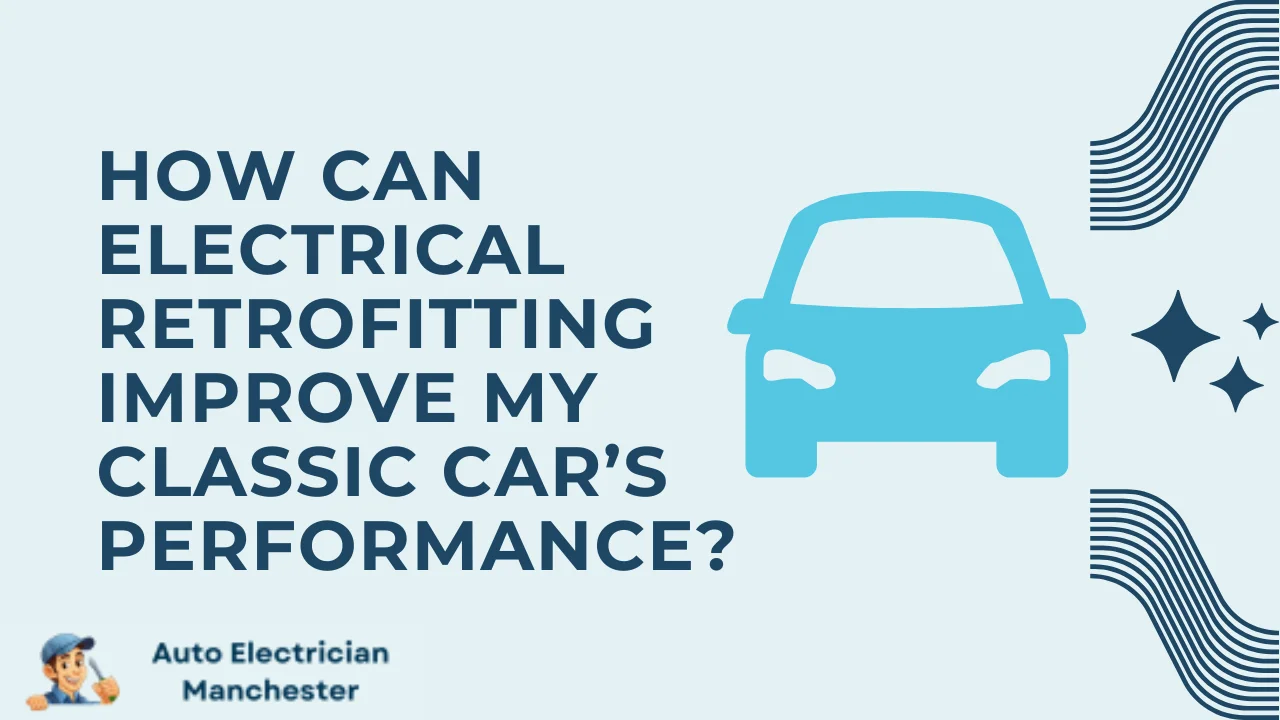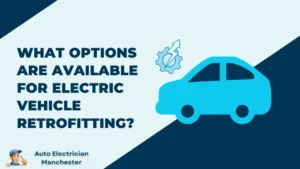
Classic cars hold a special place in our hearts. They’re rolling testaments to a bygone era, embodying timeless design and engineering marvels. But let’s face it, their electrical systems haven’t aged as gracefully. These vintage components can become bottlenecks, hindering performance and reliability. Thankfully, there’s a solution: electrical retrofitting.
Electrical retrofitting is the process of upgrading your classic car’s electrical system with modern components. It’s like giving your beloved machine a heart transplant, infusing it with renewed vigor and unlocking a new level of performance. Here’s how electrical retrofitting can breathe new life into your classic and transform your driving experience:
Upgrading Your Ignition System
The ignition system plays a crucial role in your engine’s performance. Classic cars often rely on points and condenser setups, which can wear out over time, leading to weak spark, inconsistent starts, and rough idling. Upgrading to a modern electronic ignition system is a game-changer.
Sharper Sparks: Electronic ignitions deliver a hotter, more consistent spark. This translates to easier starting, especially in cold weather. No more cranking the engine endlessly, just smooth and effortless ignitions.
Smoother Idling: Inconsistent spark can cause erratic engine behavior, leading to a rough idle. Modern electronic ignitions provide a precise and stable spark, resulting in a noticeably smoother and more enjoyable driving experience.
Potential Fuel Efficiency Gains: A strong and consistent spark ensures complete combustion within the engine cylinders. This can lead to improved fuel efficiency, allowing you to squeeze more miles out of every gallon.
Installing a High-Output Alternator
Classic car alternators were designed for a simpler time, when electrical demands were minimal. Today’s vehicles have a plethora of power-hungry components, from fuel injection systems to audio equipment. A classic car’s original alternator simply can’t keep up. Upgrading to a high-output alternator ensures:
Ample Power Delivery: A modern high-output alternator provides sufficient power to meet all your car’s electrical needs. This guarantees reliable operation of essential components like headlights, taillights, and even the ignition system.
Room for Growth: Are you planning future performance upgrades? A high-output alternator ensures you have the electrical capacity to support them, whether it’s a high-performance audio system or an electric fuel pump. No more worrying about overloading the electrical system and risking breakdowns.
Peace of Mind: Dimming headlights and flickering gauges are telltale signs of an insufficient electrical system. A high-output alternator provides the peace of mind of knowing your car has the power it needs to function flawlessly.
Clean Power Delivery: Replacing Your Wiring Harness
A car’s wiring harness is the nervous system, carrying electrical current throughout the vehicle. Over time, the insulation on classic car wiring can become brittle and crack, causing voltage drops and electrical gremlins. Upgrading to a modern wiring harness offers several advantages:
Consistent Power Flow: Modern wiring harnesses use high-quality materials with superior insulation. This ensures a cleaner and more consistent flow of electricity throughout the car, eliminating voltage drops and erratic electrical behavior.
Improved Reliability: A faulty wiring harness can lead to a cascade of electrical problems. Upgrading to a fresh harness minimizes the risk of electrical gremlins and ensures reliable operation of all your car’s electrical components.
Enhanced Spark Quality: A clean and consistent power supply from the wiring harness translates to a better spark at the plugs. This can lead to improved engine performance and potentially even better fuel efficiency.
Light Up the Night: Converting to LED Lighting
Classic car headlights often rely on halogen bulbs, which are notoriously dim and power-hungry. Upgrading to LED lighting offers a significant improvement:
Superior Brightness: LED headlights are significantly brighter than traditional halogen bulbs. This provides improved nighttime visibility, keeping you and your passengers safer on the road.
Reduced Power Consumption: LED lights are incredibly efficient, drawing far less power than halogen bulbs. This reduces strain on your car’s electrical system and potentially frees up valuable power for other components.
Cooler Operation: Unlike halogen bulbs which generate significant heat, LEDs produce minimal heat. This not only reduces the risk of heat-related damage to your headlights but also improves overall engine bay temperatures.
Increased Reliability and Easier Maintenance
Classic car electrical systems can be notoriously complex and challenging to diagnose. Worn-out components and outdated technology can lead to intermittent problems that can leave you stranded on the side of the road. Upgrading to modern electrical components offers several advantages in terms of reliability and maintainability:
Reduced Downtime: Modern components are generally more reliable and less prone to failure than their vintage counterparts. This translates to fewer breakdowns and less time spent troubleshooting electrical gremlins.
Simplified Diagnostics: Modern components often come with better diagnostic features, making it easier for mechanics to identify and fix problems. This can save you time and money in the long run.
Readily Available Parts: Upgrading to commonly used modern components ensures that replacement parts are readily available, unlike potentially hard-to-find vintage parts. This allows for easier and quicker repairs.
Improved Fuel Economy and Environmental Impact
While not the primary focus for many classic car enthusiasts, electrical retrofitting can also have a positive impact on fuel economy and environmental impact:
More Efficient Combustion: A strong and consistent spark from a modern ignition system ensures complete combustion of fuel within the engine cylinders. This can lead to improved fuel efficiency, allowing you to travel farther on each tank of gas.
Reduced Emissions: Complete combustion also results in fewer unburned hydrocarbons being released into the atmosphere. This contributes to a cleaner environment and helps your classic car become a more responsible citizen on the road.
Future of Classic Cars
Electrical retrofitting isn’t about compromising the classic character of your car. It’s about preserving its legacy while embracing advancements in technology. By upgrading the electrical system, you’re ensuring your classic car continues to be a reliable and enjoyable companion for years to come.
Conclusion
Electrical retrofitting breathes new life into your classic car, transforming it from a nostalgic reminder of the past into a capable and enjoyable companion for the modern road. By embracing advancements in technology, you can ensure your classic car continues to be a source of pride and joy for years to come. So, are you ready to unleash the hidden potential of your classic and experience the thrill of the road anew?
FAQ
Is electrical retrofitting expensive?
The cost of electrical retrofitting can vary depending on the specific upgrades you choose and the complexity of your car’s electrical system. However, the benefits in terms of performance, reliability, and safety can outweigh the initial investment.

David Mack is a seasoned writer with a passion for the auto electrician niche. With years of hands-on experience and a knack for demystifying complex topics, David brings practical insights to his readers. Whether you’re a professional or a car enthusiast, his engaging articles offer valuable tips and trends in auto electrical systems.
